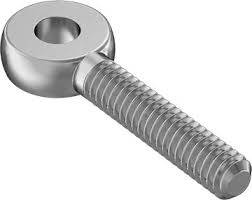The aerospace industry continuously seeks advancements in aircraft design and manufacturing, aiming for improvements in performance, efficiency, and reliability. The introduction of NAS1329 nut inserts has brought about a significant shift in how manufacturers approach the assembly and maintenance of critical aircraft components. This article delves into the specifics of NAS1329 nut inserts, illustrating their role in enhancing threaded joint design within the aviation sector.
Enhanced Performance and Efficiency
Material Quality and Specifications
NAS1329 nut inserts are made from high-quality materials such as corrosion-resistant steel and aluminum, ensuring they meet the stringent demands of the aviation industry. These materials offer an optimal balance between strength and lightweight properties, contributing to overall aircraft performance. The inserts come in various sizes and specifications, accommodating a range of application requirements. For example, diameters can vary from 3/32 inches to 3/8 inches, with thread sizes to match the diversity of applications in aircraft structures and systems.
Durability and Lifespan
The durability of these nut inserts is unparalleled, significantly reducing the need for frequent replacements. Tests have demonstrated that NAS1329 inserts can withstand tens of thousands of load cycles without failure, directly contributing to their prolonged lifespan. This longevity is crucial in aviation, where the reliability of every component can affect the safety and operational efficiency of the aircraft.
Cost-Effectiveness and Budget Considerations
Initial Costs and Long-Term Savings
While the initial price of NAS1329 nut inserts might be higher than traditional fasteners, the long-term savings are considerable. The enhanced durability and reduced maintenance requirements translate into fewer replacements and less downtime for repairs, offering substantial cost benefits over the aircraft’s operational life. For instance, incorporating these inserts into an aircraft’s design can lead to a noticeable decrease in maintenance costs, with savings ranging from 15% to 25% compared to traditional fastening methods.
Efficiency in Installation
The design of NAS1329 nut inserts facilitates swift and secure installation, which can significantly speed up the assembly process of aircraft components. This efficiency in installation not only reduces labor costs but also accelerates the manufacturing timeline, enabling faster delivery of aircraft to customers. The ability to quickly replace or maintain these inserts without compromising the integrity of the threaded joint or the surrounding structure further enhances their cost-effectiveness.

Advantages Over Traditional Fastening Methods
Superior Joint Integrity
The unique design of NAS1329 nut inserts offers superior joint integrity, especially in applications subject to high vibrations and dynamic loads. Unlike traditional fasteners that might loosen over time, these inserts maintain a tight, secure fit, ensuring the reliability of the joint throughout the aircraft’s service life.
Flexibility in Design
The versatility of NAS1329 inserts allows for their use in a wide range of aviation applications, from structural components to critical systems. This flexibility supports innovative aircraft designs, facilitating the development of lighter, more efficient aircraft without compromising on strength or reliability.
Conclusion
In summary, NAS1329 nut inserts represent a significant advancement in the design and assembly of threaded joints in aviation. Their high-quality materials, durability, and cost-effective attributes make them an indispensable solution for modern aircraft manufacturing. By incorporating these inserts into their designs, manufacturers can achieve enhanced performance, efficiency, and reliability in their aircraft, contributing to the ongoing evolution of the aviation industry.